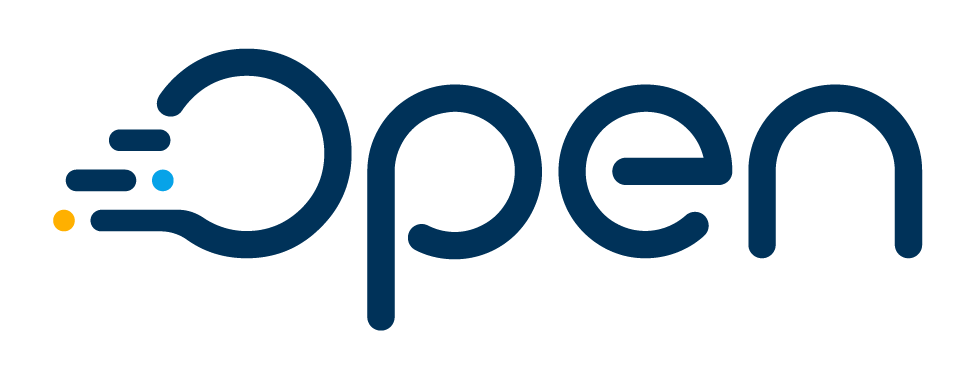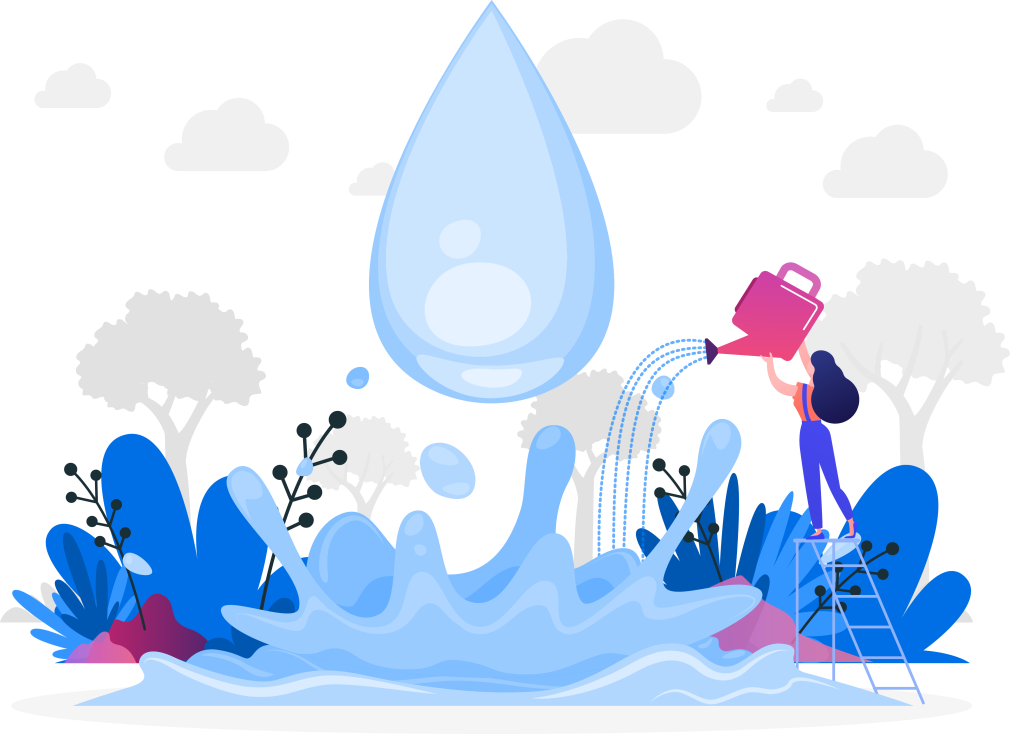
To reduce Non-Revenue Water (NRW) levels that can be caused by factors such as meter inaccuracy, leaks, or even theft, water utilities must have technological tools that allow them to have adequate control of their decisions through real-time data support. With Smartflex, a software solution that helps water companies face NRW challenges, these utilities will be able to achieve increased profits and greater cost-efficiency.
The Effects of Non-Revenue Water
Water utilities face several challenges with one of the most persistent of them being Non-Revenue Water (NRW): water that is pumped or produced but is subsequently lost or otherwise unaccounted for in the system. This is a global problem that not only wastes a valuable natural resource, but also causes economic, ecological, and humanitarian damage.
Today, 25-50 percent of all distributed water globally is lost or never invoiced due to illegal connections, leakages, inaccurate metering, deteriorating infrastructure, inaccurate billing systems, and lack of pressure management etc. [1].
In order to analyze the problem of NRW for municipalities around the world, the International Water Association (IWA), the authority in charge of standardizing the concepts and processes of water supply systems, devised a Water Balance Model as a tool to generate statistics, categorize and quantify the different types of water losses, and obtain an overview of the costs incurred by water and sewage companies as a result of non-revenue water.
According to this globally recognized model, shown in Figure1, NRW levels correspond to the difference between the amount of water injected into the water supply system and the actual amount of water billed to customers as a result of real water losses due to leakage, apparent losses due to metering inaccuracies or unauthorized consumption, and unbilled authorized consumption. The leakage component can generally be broken down into three main causes: leakage on service connections at the point of customer metering, leakage and overflows at utility storage tanks, and leakage on transmission and distribution mains.
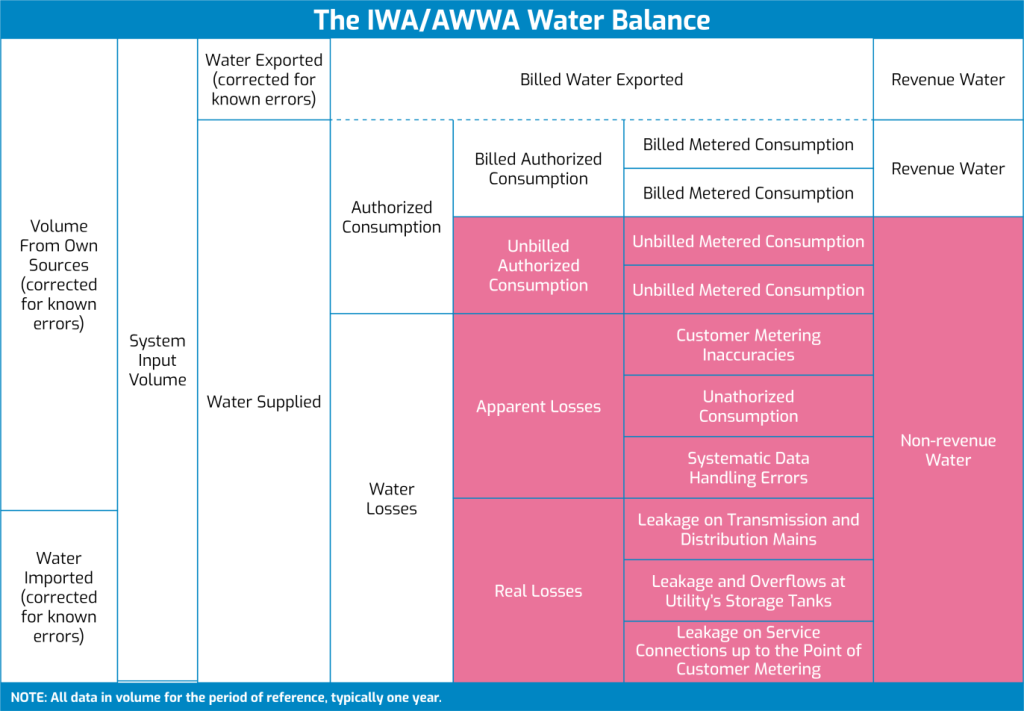
Figure 1. The IWA/AWWA Water Balance
Regulations related to resource conservation are getting stricter, consumers are increasingly more conscious about conservation, and utility companies are expected to become increasingly efficient. Because of this pressure, water utilities must change the way they operate and seek new solutions to optimize their operations. Companies that do not implement an effective NRW strategy are at risk of entering a vicious cycle– as higher NRW levels drive up both capital and operational expenditure, utilities are further limited in their available budget for controlling NRW.
In a current report by State of Green, it was estimated that the apparent loss caused by inaccurate metering and data handling errors typically makes up 25%–75% of the total NRW [2]. Consequently, it is necessary for water utilities to implement effective strategies to properly analyze their company’s meter data and successfully manage NRW to increase their operating resources.
Because NRW intervention can carry a substantial cost, the challenge for water utilities is to determine the optimal level of investment in their NRW strategy. In the US alone, it is necessary to invest a total of $109 billion per year in water infrastructure over the next 20 years to close the water infrastructure gap [3]. The trade-off between the value of lost water and the required investment to reduce this loss requires careful economic analysis. Reducing leakage and commercial losses tend to be costly, especially if large sections of piping need to be replaced.
Implementing a Successful NRW Strategy
The key to developing an effective strategy for reducing NRW is to gain a better understanding of the components that drive NRW and the conditions which influence these components. Based on this understanding, techniques and procedures can be developed for the specific characteristics of each company´s water network, to mitigate each of the components in a prioritized way and strive for an optimal level of resource investment in managing NRW.
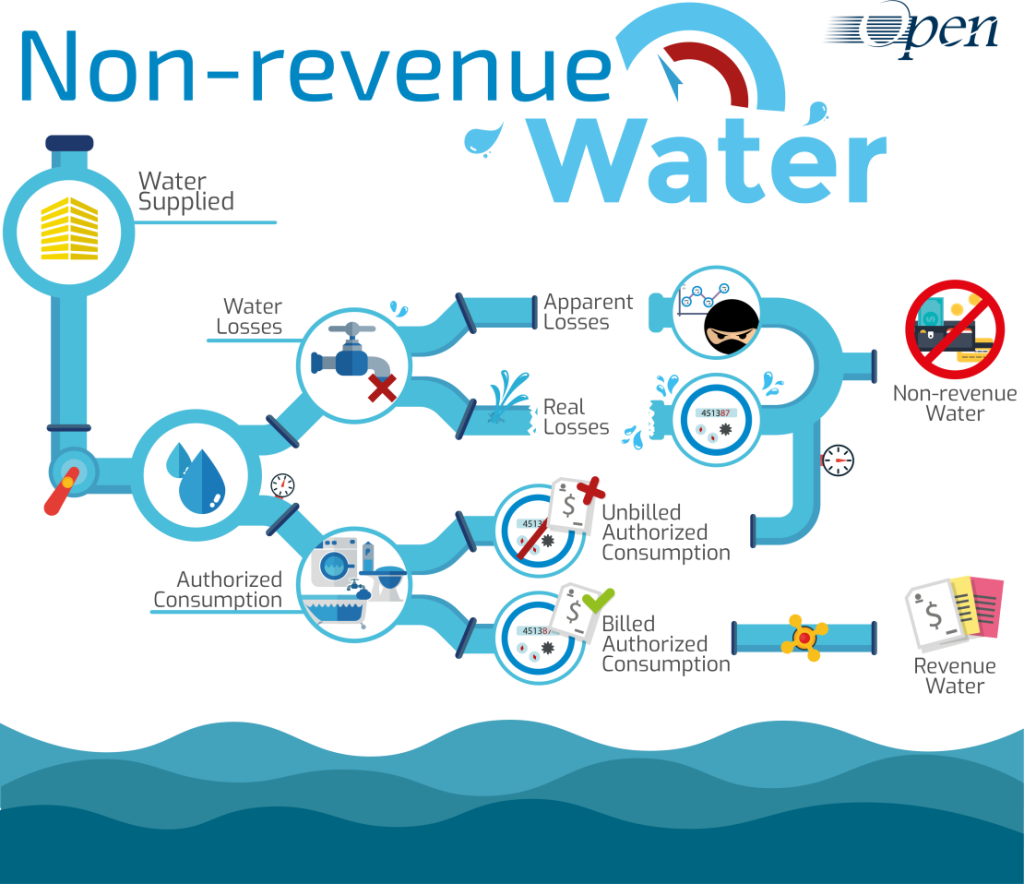
The first step towards developing an optimal NRW strategy is having the technological tools in place to perform a precise diagnosis of the causal factors and provide the right analytical support for driving the effectiveness of the chosen combination of mitigating strategies. Tools like real-time dashboards, control panels, and interactive reports can efficiently consolidate network-maintenance information and statistical data on historical customer consumption. These tools can be used to enable a statistical oversight of the operation based on industry-recognized models.
Some software solutions provide analytic capabilities, often using AMI technology, that provide technical teams with continuous analysis of NRW indicators. These indicators facilitate timely decision-making while aiding the development and implementation of long-term NRW management strategies.
Ultimately, utility companies need to have the right tools and software solutions to develop a winning NRW strategy. Smartflex, a modern cloud CIS solution with a flexible and holistic approach, enables water utilities to overcome the challenges associated with NRW. The solution is expanded in four dimensions: on the metering side with MDM features, on the customer side through a CSS portal featured with omnichannel engagement capabilities and digital self-service attributes, on the field dimension with MWM features, and dashboards that provide the input necessary to enhance service providers’ decision-making process.

Smartflex has a variety of extensive functionalities such as outage monitoring, which helps check the status of service shortages, manage notifications and alerts, and supports the configuration of different alert types associated with a set of system events that require continuous monitoring. With this functionality, water utilities have the ability to notify their customers about their usage, conservation alerts, outages, and more! With these kinds of capabilities, water utilities can give customers peace of mind and keep them up to date with important information.
Additionally, Smartflex supports mass meter data processing and can analyze usage intervals received from smart meters to ensure that quality data is visualized through the solution’s dashboards. With this modern solution, utilities can have both traditional and smart meter management and real-time data support.
NRW is a clear challenge for water utilities that can cause financial and environmental impact. As NRW continues to affect the financial viability of water companies, it is critical for these service providers to implement a flexible and innovative software solution that helps them minimize their water losses. A world-class solution, like Smartflex, offers a variety of tools such as real-time dashboards, notifications, and alerts to provide water utilities with the support they need to reduce and manage their NRW levels.
[1]. State of Green (March,03.2021). Reducing urban water losses. Available in: https://stateofgreen.com/en/publications/reducing-urban-water-loss/
[2]. State of Green (March,03.2021). Reducing urban water losses. Available in: https://stateofgreen.com/en/publications/reducing-urban-water-loss/
[3]. ASCE – American Society of Civil Engineers (2020). The Economic Benefits of Investing in Water Infrastructure.http://www.uswateralliance.org/sites/uswateralliance.org/files/publications/The%20Economic%20Benefits%20of%20Investing%20in%20Water%20Infrastructure_final.pdf
